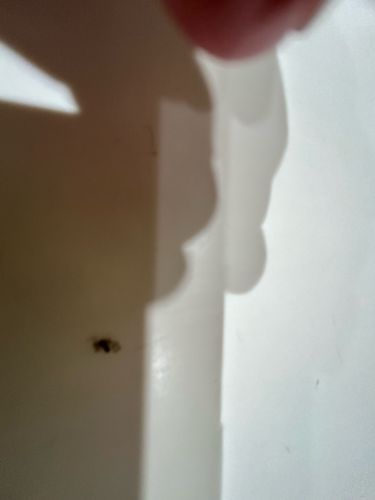Fruit Fly (common house fly type)
Scientific Name: Drosophila melanogaster (for a common fruit fly) or Musca domestica (for a common house fly, though the image appears smaller and darker, more consistent with a fruit fly)
Order & Family: Order: Diptera, Family: Drosophilidae (or possibly Muscidae for common house fly types, though Drosophilidae fits the size better)
Size: Typically 2-4 mm (for a fruit fly). Common house flies are larger, around 6-7 mm, which does not appear to be the case in the image.

Natural Habitat
Commonly found indoors, especially in kitchens or areas where ripe fruits, vegetables, or fermenting liquids are present. Outdoors, they can be found near decaying organic matter.
Diet & Feeding
Adult fruit flies feed on decaying fruits, vegetables, and other organic matter. Larvae feed on microorganisms and decaying material within their breeding sites.
Behavior Patterns
Adult flies are often seen resting on walls, ceilings, or windows. They are active during the day and are often attracted to light. Larvae develop in decaying organic matter, which is often moist.
Risks & Benefits
Risks: Can be a nuisance in homes and food establishments. They can also transfer microorganisms from decaying matter to food surfaces, potentially contaminating food. Benefits: Play a role in decomposition in ecosystems.
Identified on: 8/29/2025